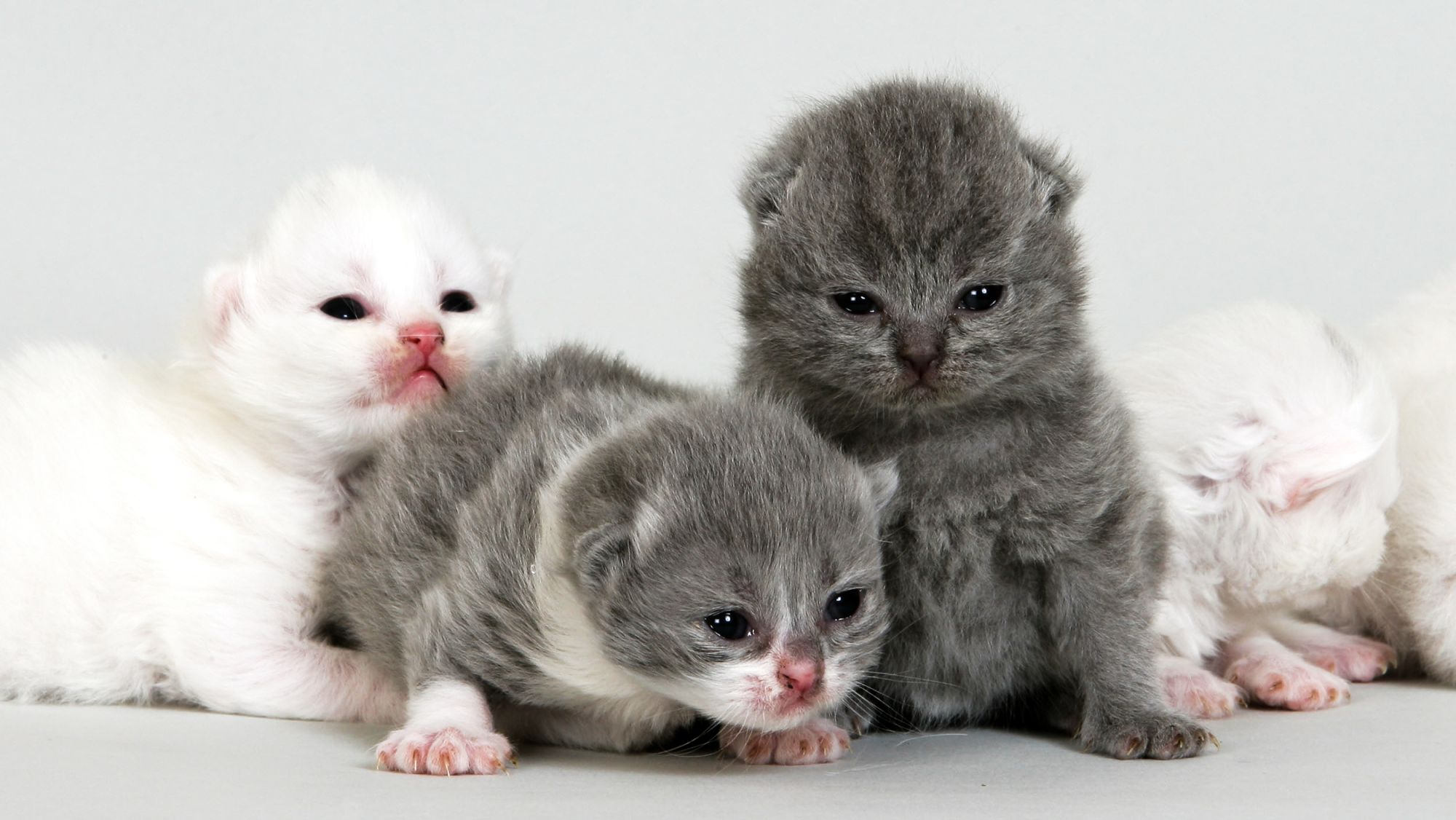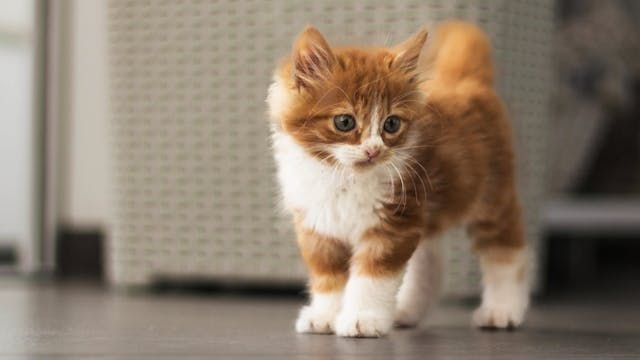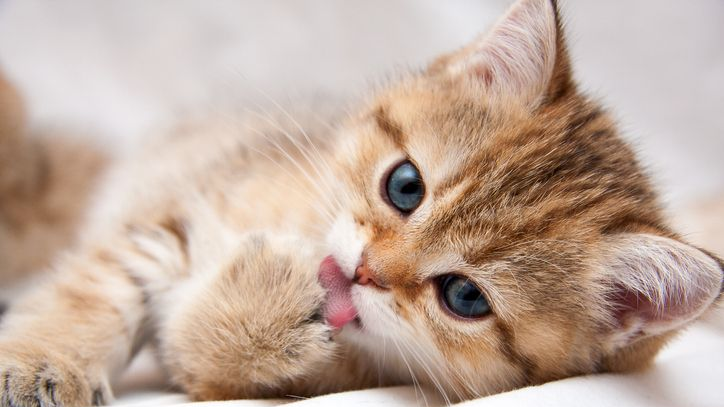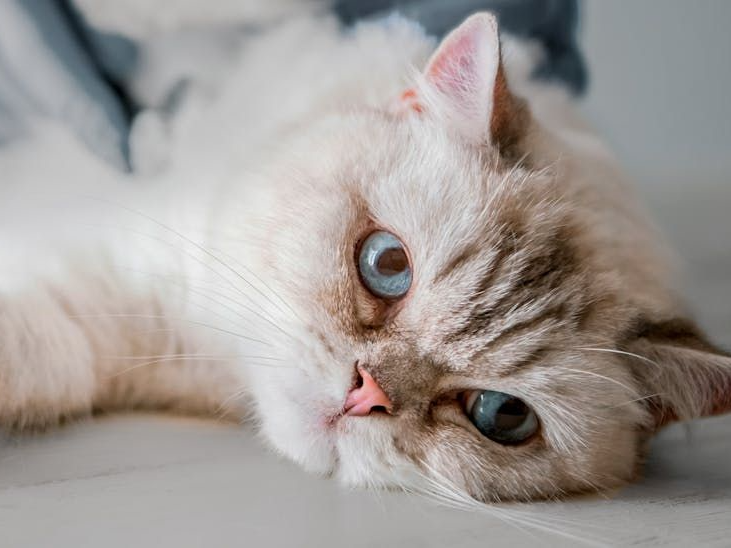When do kittens first open their eyes?
Your kitten's eyes opening is the first big milestone in a kitten's life, signalling their transition from helpless little one to the kind of rambunctious adult cats we know and love. They are born with their eyes shut tight and unable to see, folded ears and cannot regulate their body temperature.
Your kitten's eyes will open when they are around two weeks old. Their ears will unfold as their canals open. But it will take two months to develop those senses enough to resemble an adult cat's visual acuity and hearing.
Article

Kitten development milestones
During stage one of a kitten's life, they are helpless. Unable to see, hear, or regulate their own body temperature, they depend entirely on their mother to meet all their needs. The umbilical cord is still present, and most of their movement is directed towards their mum for warmth and nutrition.
Even though a kitten's eyes and ears are closed, exposure to bright lights and loud noises can cause eyesight and hearing damage.
At the very beginning, kittens suckle colostrum from their mother. Colostrum is rich in antibodies and supports their undeveloped immune system. They cannot urinate or defecate at this age, so their mother must stimulate them to pass their waste.
The umbilical cord falls off in this stage of your kitten's life. Around eight to twelve days of age, the eyes and ear canals begin to open. As the ear canals open, their ears will unfold from their heads. Their sight and hearing continue to be remarkably undeveloped, leaving them relying heavily on their senses of touch and smell.
At around two weeks, your kitten's eyes will be completely open, and their ears will continue to unfold. They won't have full vision for a few weeks yet. All kittens start with blue eyes until they become the cat’s permanent eye colour at eight weeks. For example, A Tabby will have blue eyes at first, but they change to amber or brown as they get older. However, some breeds such as Siamese, will keep the blue eyes.
At three weeks old, your kitten has emerging milk teeth and unfolded ears. They stumble around, exploring the litter box and their surroundings. By six weeks, all of their milk teeth will be present.
At four weeks, there is an improvement in their eyesight. Their pupils can dilate and constrict at this age, and their depth perception is developing.
Around six weeks, your kitten's vision and hearing will work well, but not as well as an adult cat until around two months. They can get around, socialise with their siblings, are weaned, and use the litter box. Some will go to their new families at this age but leaving them with their mother until they are eight weeks old helps them learn proper cat behaviours and socialisation.
How do your kitten's eyes differ from ours?
What does your kitten see?
Cats have an amazing ability to see well in low light and detect even the slightest movement. However, as your kitten's eyes develop, they must be protected from bright light to reduce the risk of eye damage.
Your kitten's vision—and hearing—timeline
As your kitten's eyes open, their vision will start out blurry and slowly clear up. By the time they are six weeks old, their vision will be pretty clear. Their ears are also on a similar timeline and will develop over time until both senses are as sharp as adult cats.

When should you be concerned about your kitten's eyes?
Not all kittens' eyes open up at the same time, or even both eyes together. But if your kitten's eyes have not opened by two weeks, take them to your veterinarian to rule out any problems or abnormalities.
Kittens can develop crusty secretions in their eyes. It's vital to keep your kitten's face and eyes clean. Bacterial and viral infections are common and can damage eyesight—routinely grooming your kitten will reduce the risk of them. Kitten eye care involves washing your kitten's face gently with a soft cloth and warm, clean water. Wipe the eyes from the nose outward. Be careful not to force their eyes to open. They must open naturally.

Other potential eye problems indicating a vet visit for kittens are:
- Entropion: The eyelids turn in, causing discomfort and inflammation to the eye and lids
- Conjunctivitis: Inflammation of the tissue inside the eyelids
- Epiphora: A tear duct is wholly or partially obstructed
- Prolapse: The third eyelid is visible
- Retinal detachment: This can happen from a blow to the head or a significant drop and can seriously affect their vision if left untreated
When to seek professional help:
If you notice your kitten has red eyes, discharge, crust, a bump under the eyelid, swelling, itching, poor space location, and frequent startles.
Related articles
Like & share this page

